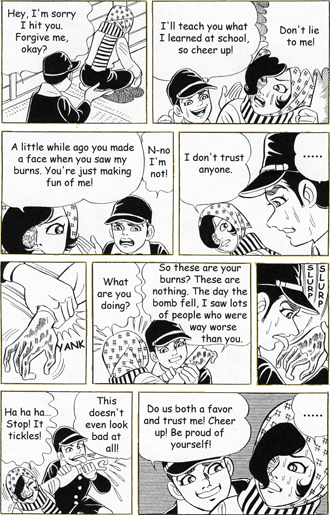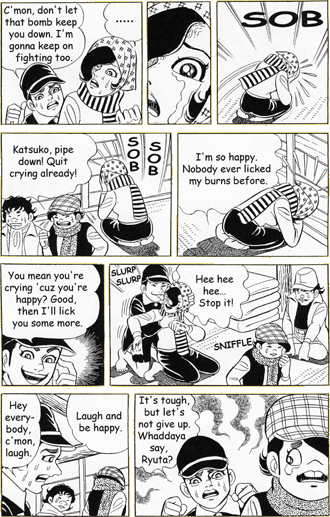
War through the Eyes of Children
With the Help of Barefoot Gen
Children Fight to Survive
The evacuation of schoolchildren in 1945 did save thousands from direct exposure to the atomic bomb. However, many of those children whose homes were in central Hiroshima were lost their entire families, becoming “war orphans.” The number of these orphans has been variously estimated from 2,000 to 6,500. The precise number will never be known.
When the war ended, children without relatives were housed in facilities like the Hiroshima War Orphans Foster Home. However, some fled from these facilities, while others had no idea such orphanages existed. These homeless orphans had to survive on their own.
Life in these “homes” was by no means easy. Food was a major issue. In time, relief supplies arrived from overseas countries via organizations such as LARA (Licensed Agencies for Relief of Asia). In addition, a “moral adoption” program allowed individual American applicants to become “adoptive parents” offering financial support and Christmas presents to an A-bomb orphan. These relationships provided critical financial and emotional support to these children.

Shoe polishing
Many children lost their blood relatives in the A-bombing. To survive, they had to go out to work. Even in cases where they still had surviving family members, many children worked for a living.
1948 In front of Hiroshima Station
Photo by Yuichiro Sasaki Courtesy of Yugo Shioura
Gen was surrounded by A-bomb orphans. Ryuta, Donguri, Musubi and Katsuko were eking out a living on their own or living with other children.
From Barefoot Gen-The Never-Ending War, Last Gasp of San Francisco, 2007, translated by Project Gen

